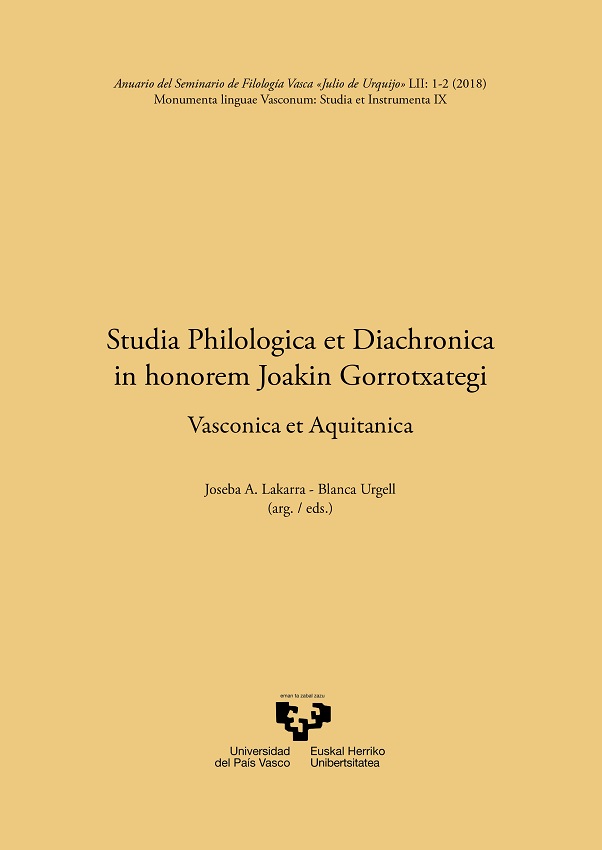Herskarien ustezko ahoskabetasun asimilazioa eta euskal herskari zaharren gauzatzea
##plugins.themes.bootstrap3.article.main##
##plugins.themes.bootstrap3.article.sidebar##
Argitaratua
2018-09-15
Ander Egurtzegi
Laburpena
Euskaraz, herskari ahoskabe (hasperendun) batek jarraituriko herskari ahostun bat horren eraginez ahoskabetu daiteke. Tipologikoki arraroa den aldaketa hau ahoskabetasunaren asimilazio bezala deskribatua izan da. Honakoan, aldaketaren oinarria hasperenketan dagoela proposatzen dut. Analisi honek, aurrekoek ez bezala, herskarien hasperenketaren kokapen aldaketaren eta hots aldaketa galarazi zuten testuinguruen berri ematen du eta euskal herskari zaharren inguruko galdera berriak sortzen ditu. Herskarien egungo oposizioa ahostun vs. ahoskabe bezala deskribatzen dugu. Hala ere, autore gehienek sistema ezberdin bat berreraikitzen dute. Lan honetan, bi herskari serie berreraikitzen ditut: herskari ahoskabe hasperendunak ([spread glottis] ezaugarria dutenak) eta hasperenik gabeko serie bat (espezifikazio laringalik gabekoa), hitz hasieran hasperenik gabeko herskari ahoskabe bezala gauzatzen zena eta hitz erdian pasiboki ahostundu egiten zena.
Nola aipatu
Egurtzegi, Ander. 2018. «Herskarien Ustezko Ahoskabetasun Asimilazioa Eta Euskal Herskari Zaharren Gauzatzea». Anuario Del Seminario De Filología Vasca "Julio De Urquijo" 52 (1/2):189-206. https://doi.org/10.1387/asju.20198.
##plugins.themes.bootstrap3.article.details##
Atala
Artikuluak
Lan hau Creative Commons Aitortu-EzKomertziala-LanEratorririkGabe 4.0 Nazioartekoa lizentzia baten mende dago.


